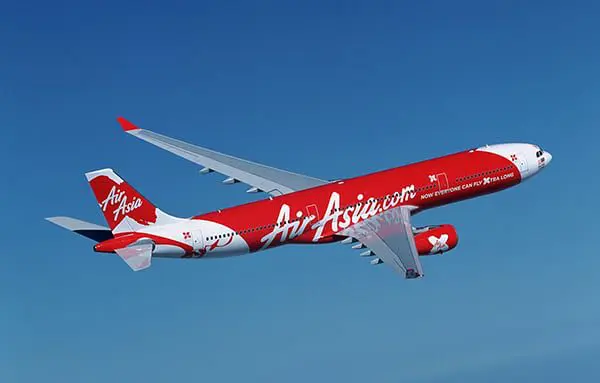“Good morning, hope you’re enjoying your flight from Sydney to Malaysia. Unfortunately we’ve made a slight navigational error and are flying to Melbourne instead.”
Okay so maybe that’s not exactly how an AirAsia X pilot broke the news to his passengers, but that’s part of how we picture the confession and the cabin’s reaction.

It is however, true that the flight from Sydney to Malaysia ended up in Melbourne instead of Malaysia, when the pilot entered the wrong coordinates into the plane’s navigation system.
The A330 departed Sydney as scheduled on 10 March last year, and was expected to arrive in Kuala Lumpur nine hours later. Instead, it landed in Melbourne at 2.00pm, a couple of hours after takeoff.
According to a report by the Australian Transport Safety Bureau (ATSB), faulty earmuffs played a role in the navigational error but crew had several opportunities to notice the error before arriving in Melbourne.
The report explained that in usual circumstances, the captain conducts an external inspection of the aircraft while the first officer remains in the cockpit where he or she completes position initialisation and alignment procedures, The Guardian reported.
On the day of the AirAsia flight, the captain’s ear protection was unavailable, so he stayed in the cockpit where he entered their current coordinates, which were copied from a sign outside the cockpit window.

An analysis of the coordinates found that instead of entering 151° 9.8’ east, or 15109.8 in the system, he entered 5° 19.8’ east, or 01519.8.
A statement for AirAsia X explained that the investigation found coordinates entered of the aircraft’s current location meant the aircraft was not on the approved flight path. The aircraft was then diverted to Melbourne via radar vector as the weather had deteriorated in the Sydney area.
Crew admitted that there were “a number of opportunities to identify and correct the error”, but they weren’t noticed until they were already flying in to the wrong direction.
Those opportunities included onscreen messages during cockpit preparations crosscheck, three chimes and a ‘Terrain! Terrain!’ alert, which they assumed was alerting them to an object ahead.
In a statement from AirAsia X, the airline said it had taken a number of steps prior to the release of the ATSB findings to ensure a similar event would not occur in the future.
This included, equipping aircraft with upgraded flight management systems, developing a training bulletin and package for flight crew that emphasises correct operation and alignment as well as briefing all pilots in the internal investigation findings and reviewing recovery procedures to be undertaken.
“AirAsia X would like to stress that we have in place robust management systems to monitor and prevent similar incidents from reoccurring.”
AirAsia X
“We also wish to reiterate that we have regularly passed safety and security audits conducted by various international regulators, including the IATA Operational Safety Audit (IOSA).
“We remain committed to ensuring our compliance to all safety and security regulations.”





